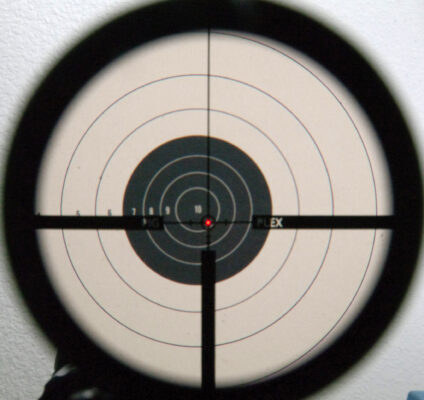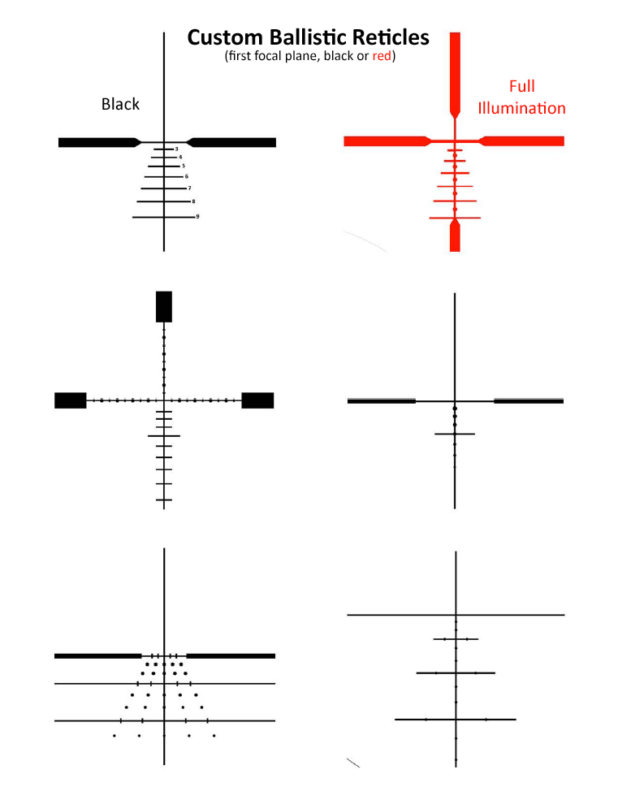Many factors go into making a successful shot, and the reticle is one of the most important. The right reticle can help you accurately hit your target, while the wrong reticle can lead to inaccurate shots and wasted time and ammunition. This article will look at what reticle rifle scopes are and how to choose the right reticle for your needs.
Table of Contents
What Is a Reticle?
A reticle is a device used to assist in aiming a rifle or other type of weapon. The word “reticle” comes from the Latin word, meaning “net”. A reticle traces its origins to the crosshairs of early weapons sights, which were literally ‘crossed lines’ etched into glass or metal plates. As technology has advanced, so have reticles. Modern rifle scopes are designed with either illuminated (usually red) or non-illuminated (black) crosshairs for easier visibility when acquiring targets in low light conditions and better contrast against dark backgrounds like foliage.
Impacts of a Scope Reticle on Ballistics
When looking for the right gear for precision shooting, people start by asking, “what do the numbers on a scope mean?” The main role of a reticle is to help you aim your weapon. There are many scope reticles available, each with its advantages and disadvantages. Some reticles are better suited for long-distance shots, while others are better for close-range combat. It’s important to choose the right reticle type for your situation.

In addition to helping you aim, reticles also play a role in ballistics. Ballistics is the science of how projectiles travel through the air, and it’s essential to understand how your reticle affects ballistics to make accurate shots. Different reticle designs can alter the bullet’s path, so it’s important to select the right reticle for the weapon you’re using.
So what makes a good reticle? There’s no one-size-fits-all answer to this question, as the best reticle depends on your individual needs and preferences. However, some general guidelines can help you pick the right reticle for your needs.
First, consider the type of weapon you’ll be using the reticle on. Different weapons have different ballistics, so a reticle that works well for one weapon may not function properly with another weapon.
In addition to choosing between different weapon types, you should also consider your preferred shooting position when selecting a reticle. Shooting in supported positions is more accurate than shooting in unsupported positions. Unsupported positions create additional stress on your body and make it harder to hold the rifle steady.
A specialized reticle like a BDC (bullet drop compensator) can be more accurate when shooting infield positions than the basic reticle. They compensate for the bullet’s path in unsupported positions.
Types of Reticle
So how do you go about choosing the right reticle for your needs? The best way to start is by understanding the different types of reticles available and their respective advantages and disadvantages. Here’s a brief overview of some of the most common types of reticles:
- Basic Reticle: This is the simplest type of reticle, and it’s found on most weapons. It consists of a simple crosshair or dot that helps you aim your weapon. The standard reticle is good for all-around use, but it can be more difficult to use when shooting in unsupported positions.
- Range Estimating Reticle: This type of reticle has a stadiametric rangefinder at the top or bottom of the crosshairs, and it’s used to estimate the distance between your target and yourself. These reticles are good for estimating distances up to 550 yards (ca. 500 m) with most weapons, although they may perform inaccurately beyond this distance. Some models have further gradations so that you can use them even longer.
- Mil-Dot Reticle: This is a popular reticle among long-distance shooters like snipers and sharpshooters because of its superior accuracy over long ranges (compared to other types). It consists of dots or hash marks that overlap and each mark represents a certain distance unit. The reticle is based on the military standard 1/mil (milliradian), providing accurate measurements for long distances.
- Bullet Drop Compensation (BDC) Reticle: This type of reticle uses concentric circles to measure the bullet’s drop from the line of sight at different distances, which allows you to compensate for this drop while aiming. These types of reticles are good for shooting in unsupported positions since they’re designed to take into account shifts in your aim point due to bullet drop while you’re holding your rifle unsteadily. However, they don’t work well when used with short-barreled weapons because many drop compensation may be required.
- MOA reticle: An MOA reticle is a type of scope that uses the “minute of angle” unit for measurements. The MOA can measure either minutes or milliradians, depending on what you are trying to accomplish with the measurement.
The minute of the arc represents one-sixtieth part of a degree, and there are 60 minutes in every degree. A milliradian (mrad) instead is equal to about 0.0573 degrees, so it’s really not much different from an MOA when looking at things this way.
Final Words
The right type of reticle for you ultimately depends on your personal shooting preferences and the type of weapon you’re using. Be sure to do your research and try out different types of reticles before deciding, so you can find the one that best suits your needs.

